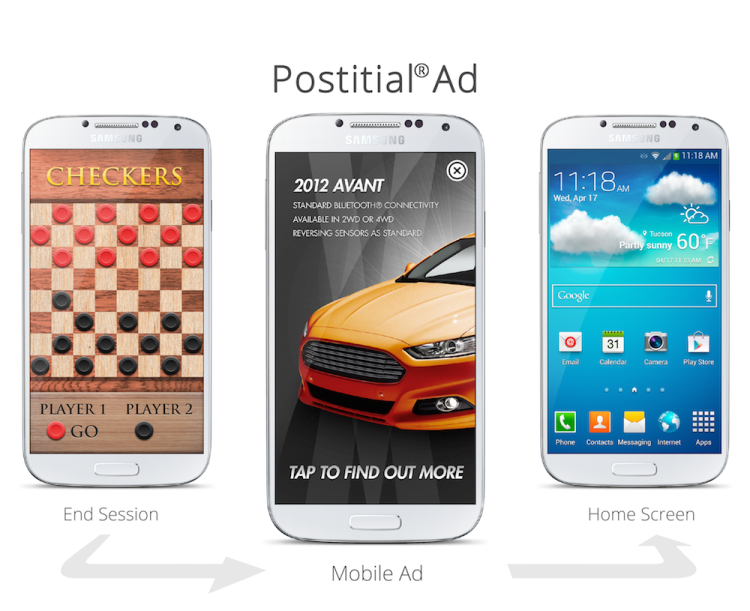John Kuolt is the cofounder and executive vice president of IQzone.
In the early days of mobile advertising, the industry took its lead from the Web. Crucial to providing a free service to people, advertising is an essential method of monetization, and early smartphones adopted banner ads across the screen. It’s only natural to adopt one, established digital format to see if it’s effective to repurpose on another. Almost a decade has passed since the first smartphones started entering our pockets, and banner ads remain a staple of mobile advertising.
For the last 15 years, banner ads have served their purpose in helping to monetize content, but as devices and indeed consumer behavior has evolved, people have found them increasingly intrusive and distracting from a core experience. A recent study from Dartmouth College found that 72 percent of mobile app and web users don’t click on mobile ads because the screen is too small, and 54 percent said they don’t tap on mobile ads because it’s frustrating when mobile consumption is interrupted.
We and our Mobile Summit speakers will have lots more to say on the fabric of mobile advertising. The Summit is an invite-only event, so be sure to request your invitation soon!
Today, of course, we have a plethora of formats for brands and publishers to consider that offer improvements on banner ads. Along with native ads, expandable rich-media banners and full screen interstitial ads offer a great, effective way of introducing brands in to mobile advertising. Over the last 12 months, native ads have done a fantastic job of blending in with the content they’re served in, which has proven to be much more engaging when compared to traditional banner ads.
Despite this, none of the mentioned formats allow for proper timing. Typically full-screen, rich media, interstitial ads appear between levels of games or when reaching the end of a piece of content, during what people deem as a natural break. However, from a developer’s point of view, if a player clicks on an ad between levels one and two, they get taken out of the game to where-ever the ad is leading them. Even if they don’t click, it’s still not a natural break for the user, as they’re still focused on the game or reading content and the ad is interrupting them during an activity. This is where a post activity or Postitial ad can work exceptionally well, both in terms of engagement and respecting the user experience while accomplishing activities.
We use our mobile devices on an activity basis – we use them to accomplish different tasks, and throughout the day, we go from task to task, using different apps and services to do so. According KPCB’s Mary Meeker in her 2013 Internet Trends report, the typical mobile user interacts with their device about 150 times per day. This doesn’t just mean that we use an app then put the phone back in our pocket. Typically, people migrate from app to app, depending on the task they want to perform. These transitions mark an extremely important moment for advertisers. When a user completes an activity, checking the weather for example, and prior to migrating to another activity, they have the mental shelf space for something else. This snippet of time represents an ideal opportunity for advertisers to deliver a full-screen, engaging message, which due to the timing is incredibly respectful of the user journey and the developer’s vision.
With this in mind and mobile use so focused, timing is the crucial element that the mobile advertising industry seems to have forgotten. As a collective, we’re always first to be championing the amazing attributes and possibilities of mobile and yet the mobile advertising industry has been too stagnant, too ineffective, for too long. Mobile advertising, much like any advertising, is about relevancy and timing.
By waiting until the user has finished their activity, closing an app, or is switching to another task and then showing a relevant, media-rich full screen, a Postitial ad to say “thank you and this session was sponsored by brand X” has proven to be around five times more engaging than traditional interstitial advertising. By showing an ad post-activity, adverts aren’t compromising the developers’ work or interrupting a user’s experience, respecting both parties.
As a medium, a mobile device can provide advertisers with enough insight to relevancy, but it’s down to in the industry to get the timing right. In a day where attention spans have dwindled and our time is precious, it means the timing of ads are vital to their success. Too intrusive and obstructive – forget about it – if an advertiser approaches the user in a timely, relevant and respectful way, they’ll be sure to get their attention.
 Cofounding mobile technology company IQzone in 2007, John Kuolt comes from a proven track record in software development and technology consultancy, under the umbrellas of Cap Gemini Ernst & Young and BearingPoint. Kuolt launched his career at Informatica, reporting directly to the chief information officer. He was later recruited by Openwave’s CEO, where he gained his extensive mobile software development background.
Cofounding mobile technology company IQzone in 2007, John Kuolt comes from a proven track record in software development and technology consultancy, under the umbrellas of Cap Gemini Ernst & Young and BearingPoint. Kuolt launched his career at Informatica, reporting directly to the chief information officer. He was later recruited by Openwave’s CEO, where he gained his extensive mobile software development background.
VentureBeat's mission is to be a digital town square for technical decision-makers to gain knowledge about transformative enterprise technology and transact. Learn More

